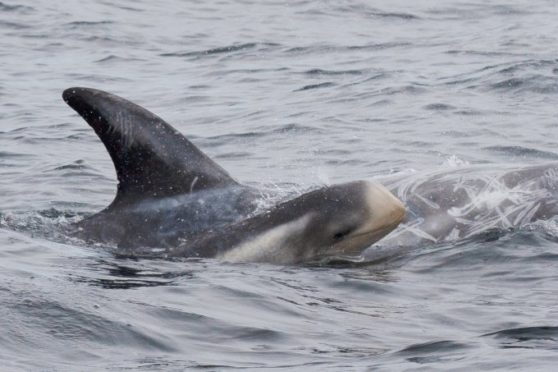A new report has called for greater protection for a population of Risso’s dolphins who are living in a ‘hotspot’ around Lewis.
The scientific study has been published in advance of the Scottish Government’s public consultation on the issue, which highlights four protected sea sites in the Western Isles.
The paper, produced by Whale and Dolphin Conservation and published in the Journal of the Marine Biological Association of the UK, reveals for the first time that individual Risso’s dolphins are returning to the same spots in one of the proposed sites (off the east of Lewis) every year and have been doing so for more than a decade.
Nicola Hodgins, WDC’s policy manager and one of the authors of the report, argued that the dolphins’ behaviour highlighted the importance of creating special sites, which would safeguard them from such factors as scallop-dredging and military exercises.
She said: “Our research highlights a unique discovery and a very significant reason for this particular proposed site to be officially made a protected area.
“It is the only known location in Scotland that Risso’s dolphins rely on to feed and bring their calves and return to again and again, month after month and year after year. “
“The high sightings of calves in this persistent ‘hotspot’ for Risso’s dolphins was identified using data collected by WDC since 2010 in the area, with dolphin sightings occurring year-round, and peak numbers recorded between May and October.”
A total of 117 individual dolphins, recognisable from photographs, were catalogued from 2010-2017 in the waters around east Lewis.
Calves, including new-borns, were recorded in more than a third of encounters, one of the highest rates anywhere in the world.
Some of these individuals return to the area repeatedly and have been photographically captured in up to six of the eight survey years.
Erich Hoyt, a research felllow at WDC, said: ‘This is a globally important opportunity to recognise and protect a relatively undisturbed Risso’s dolphin habitat.
“But, to make it work in the future, we will need effective management.’
Risso’s dolphins are classified as ‘Unknown Conservation Status’ at UK and EU level. Their physical appearance is unique and the numerous scars, from their major prey, squid, and made by other Risso’s dolphins, give them peculiar scratch markings.
